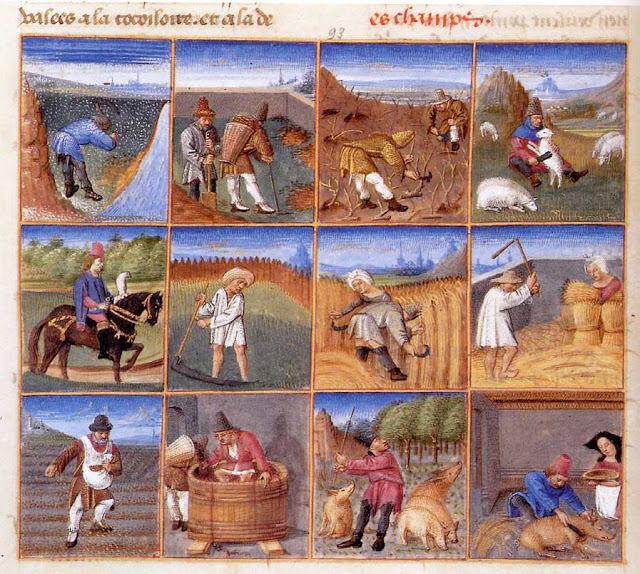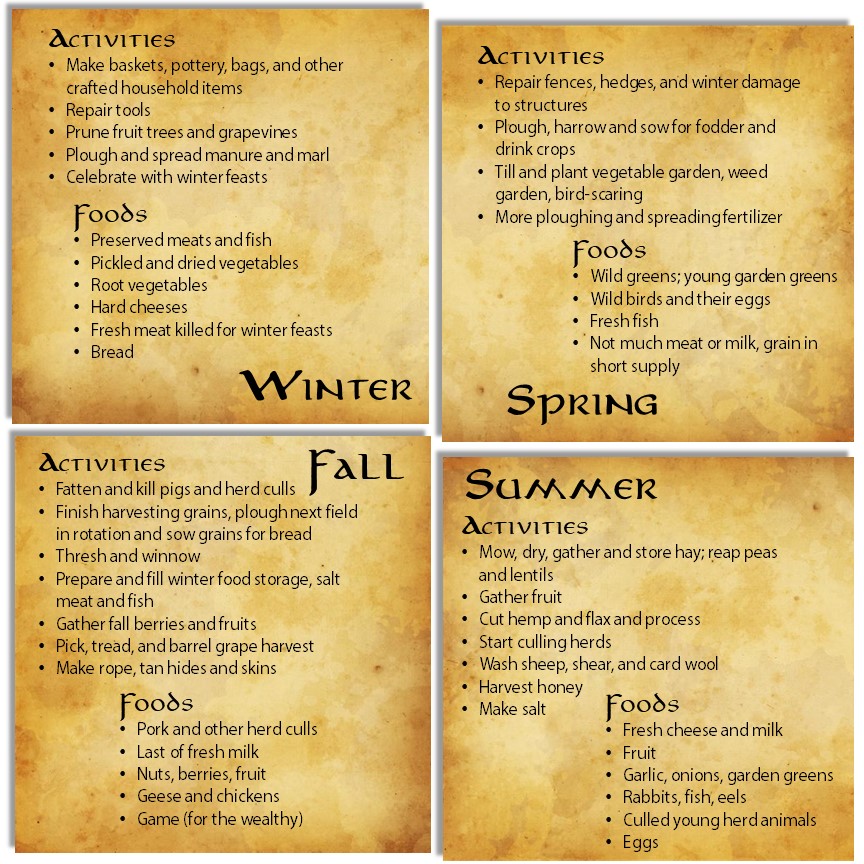The rhythm of life in the Middle Ages in most of Western Europe was governed by the seasons as much as by the calendar of the liturgical year. Those who did the labor to produce food were busy. Each task had to be done in the proper time of year. So compelling was the cycle of seasons and the work done in each month by a huge proportion of the population that there are many “calendars of seasons” in manuscripts from the period, depicting people working at food production tasks.

Agricultural production determined what food was available for the agricultural workers themselves – the peasants – and for the marketplace of the nearby town, and the noble castle, manor, or religious establishment that owned the land and whose kitchens were supplied by the work of the peasants. In times of a poor harvest due to weather, disease, or war, if there was no way to shift supplies from another place where there were food surpluses, people starved.
Here is a short general summary of the activities of the seasons, and the foods that would have been eaten in those seasons. Nearly all the work done to raise, process, and preserve food was human-powered and animal-powered. Specific crops and tasks varied in different parts of the world. Our focus in this post is on the general year’s work in most parts of western Europe.
